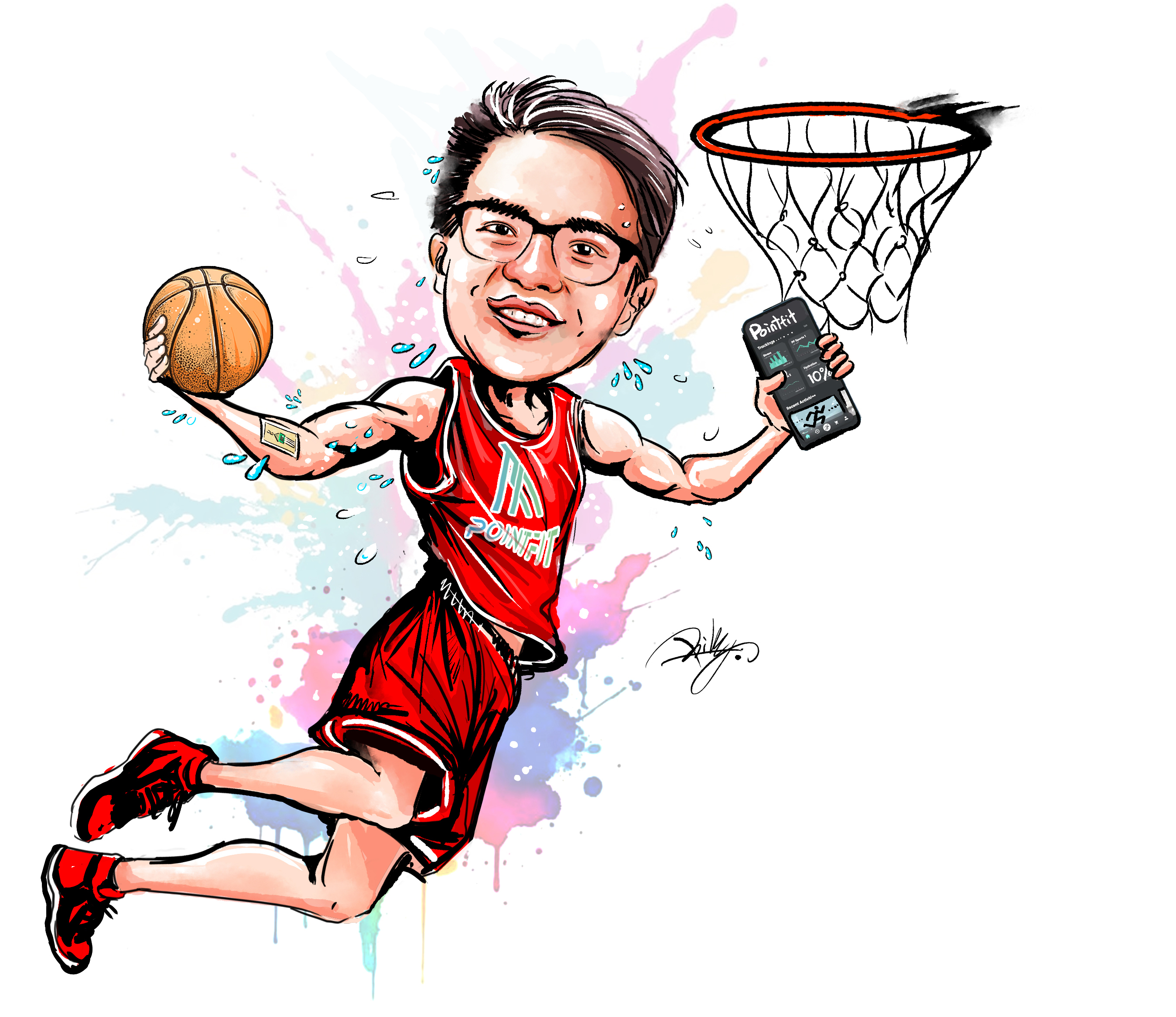Entrepreneur taps into $41 billion global fitness trackers market. Wu Menglei reports from Hong Kong.

In today’s fast-paced world, sports have evolved into an integral facet of a healthy lifestyle. But, they can also expose athletes to potential risks of injury and overexertion associated with physical activity.
“Most of the wearable devices available can only monitor a person’s heart rate, such as various smart watches, but aren’t helpful enough in preventing injuries or overtraining,” says Kenny Oktavius, an Indonesian entrepreneur in Hong Kong.
We felt it was full of risks when we first started at HKSTP, but I thought we had to take a leap of faith and build up PointFit if we wanted to do something we’re passionate about and come up with a useful product for the people.
Kenny Oktavius, co-founder of PointFit Technology
Kenny, who is an amateur basketball player, has developed a transparent sensor patch no larger than five square centimeters that can be attached to the skin to track biomarkers.
“We are in an era of biosensors. It’s not only about tracking the heart rate, but also in deeper molecular analysis. As people take up sports, lactic acid indicates their fatigue stamina, but there is no wearable device on the market that can measure it,” he says.
However, his company’s device can monitor the level of lactic acid — a chemical formed in the body as cells break down carbohydrates for energy — when a person is exercising. “The device can issue a real-time alert for users as they approach the fatigue level,” says Kenny.
READ MORE: EPiC battle sees startups chase glory in Hong Kong
It was his undergraduate final year project at the Hong Kong University of Science and Technology and later transformed into a commercial project, which won the silver award of the HKUST President’s Cup, a competition encouraging innovation and research at HKUST.
Market potential
Kenny set up PointFit Technology in 2020 at Hong Kong Science and Technology Park with a partner, who saw his innovative patch during a basketball game and was immediately impressed.
“We felt it was full of risks when we first started at HKSTP, but I thought we had to take a leap of faith and build up PointFit if we wanted to do something we are passionate about and come up with a useful product for people,” he says.
Kenny says he believes the product will complement wearable devices with a screen. In other words, PointFit wants to monitor the body indicators that are currently not detectable in any smartwatch through a skin patch processor.
The next stage involves expanding their product’s applications to monitor more biomarkers like electrolytes, glucose and hormones.
“The wearable devices market is now in an innovation stage to meet the needs of consumers, with diverse prices of products and personalization in accessories and so on,” says Sophie Pan, a research director for the Client Systems Research team at International Data Corp.
International market research firm MarketsandMarkets Research values the global electronic skin patch market at $15 billion this year and expects it to reach $27 billion by 2029.
Counterpoint, another global technology research firm, says it expects the value of the fitness trackers market, covering smartwatches, smart bands, and smart scales that help individuals track their physical activity, sleep, heart rate, and other fitness statistics, to reach $41.3 billion in 2024, with an annual growth rate of 6.6 percent through 2029.
It notes that the wearable devices market is dominated by smartwatches and true wireless stereo. The segment markets for fitness trackers and smart clothes and other wearable devices are expected to grow with more affordable prices and better functions.
Manufacturing challenge
PointFit is still focusing on research and development, and its biggest challenge is to find a suitable manufacturer.
Kenny recalls that when the company made its foray into the Guangdong-Hong Kong-Macao Greater Bay Area in 2020, most manufacturers declined its products as the production volume was too small. “When you are doing something new, they want to engage in your research and development to try it out.”
The company eventually teamed up with a manufacturer in Shenzhen. “Based on my experience, in China, we can find this kind of bio-type manufacturing, but in Southeast Asia, where I’m from, the business relies heavily on software,” says Kenny.
ALSO READ: HK$100m training program launched to nurture tech talents
He admits that the manufacturing challenge has yet to be solved because there are still processes to optimize and automate.
Although his company’s product isn’t available commercially yet, it has been supplying it to several parties, including Hong Kong Baptist University and Human Telemetrics — a company that captures real-time metrics from the human body to improve human health. The startup plans to expand to Japan as a pilot market in collaboration with ASICS, a Japanese sports equipment company.
ASICS chose PointFit as a business partner in its accelerator program for startups in 2022. The startup is trying to upgrade its skin patch processor so as to better combine with an ASICS-designed wristband.
“That could be the most memorable moment during these four years of our entrepreneurship,” says Kenny, adding he feels having won recognition they are making something “that’s interesting and consumers really want it”.
Contact the writer at thor_wu@chinadailyhk.com


